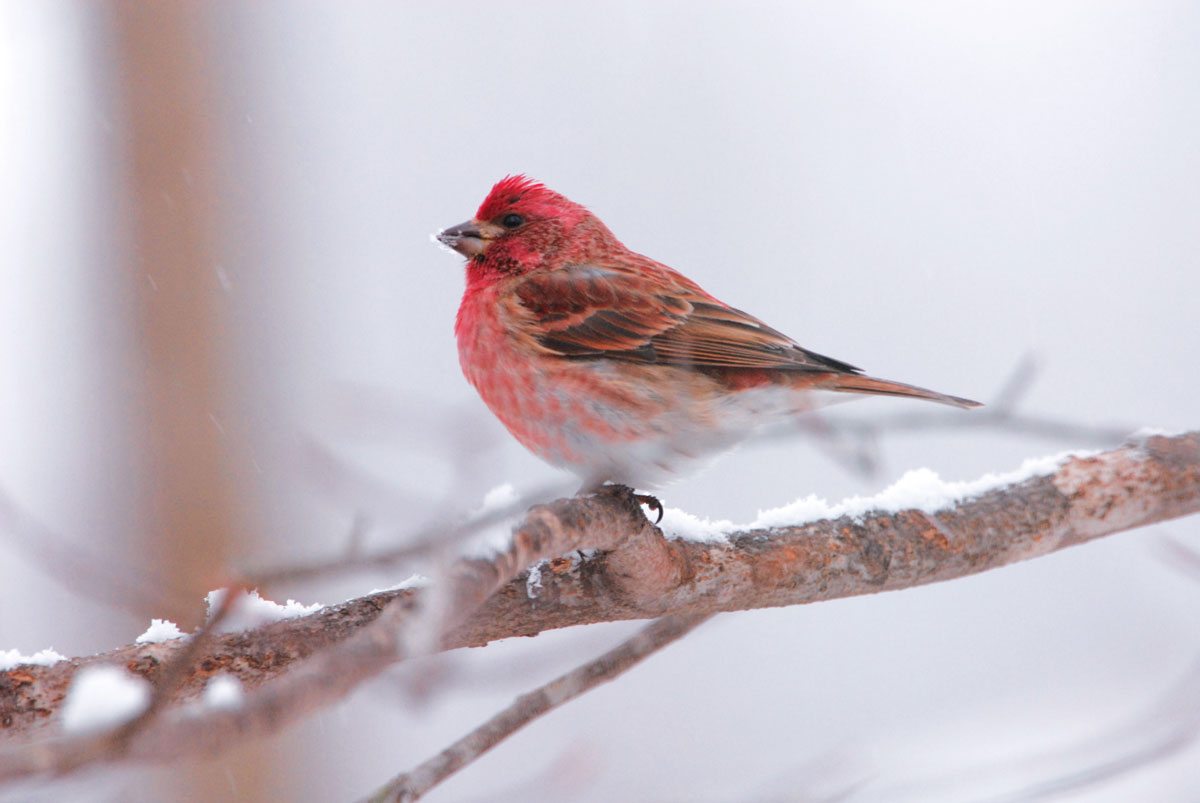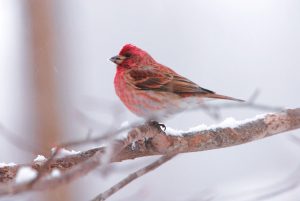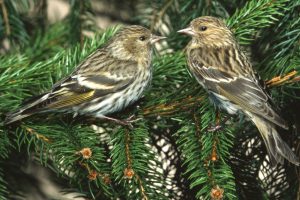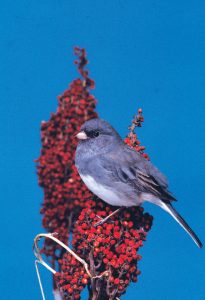

Whoever it was that first penned the classic holiday carol “The Twelve Days of Christmas” was clearly in love with a birder. Of the song’s twelve verses that describe gifts presented to a “true love” between Christmas Day and the day before Epiphany, or January 5, more than half are devoted to birds of one feather or another.
The song describes gifts made of partridges, turtle doves, geese, swans, hens, and calling or “colly” birds—and even the verse dedicated to “five gold rings” likely referred to ringed pheasants or goldfinches. Although the first published lyrics for the carol place its origin in late 18th-century England, at least one of its messages continues to resonate today: winter is still a great time for appreciating birds.
In the Great Smoky Mountains, roughly 60 or so different species of birds remain through every season. As winter arrives, several of these simply move to slightly lower elevations to avoid the frigid cold. While many warblers, vireos, orioles, tanagers, and flycatchers may decamp entirely for warmer climes farther south, others soon arrive from the north to replace them. These winter migrants include the purple finch, hermit thrush, evening grosbeak, and swamp and white-throated sparrows.

Keith Watson is one local birding guide and former National Park Service biologist who continues to find plenty to see in the Smokies through the winter months. For the last several years, he’s helped to coordinate an annual Christmas Bird Count in Great Smoky Mountains National Park, which is part of an international campaign organized by the Audubon Society between December 14 and January 5. Watson first began participating in the annual count and meeting up with other birders in the process when he was a graduate student at the University of Tennessee in the 1970s.
“People will get pre-assigned areas before they go out and spend as much time as they can or want to—either before daylight or maybe after dusk calling for owls,” says Watson. “Some people can only spend half a day doing it, but others will spend all day long doing it and wish they had more time.”
This year, two counts will be held within the national park—one in Cades Cove on January 1 and another around Sugarlands Visitor Center on January 5. For the Sugarlands count near Gatlinburg, Tennessee, Watson expects his group to record around 60 or more different bird species thanks to a diversity of habitat found in the area.
“There will be creeks and rivers and mountains but also more urban and developed areas,” says Watson. “We actually tend to pick up a few more species in our circle than they do in Cades Cove because of the different kinds of habitats.”
Last year, the count Watson organized in the park produced a few notable sightings of peregrine falcon, brown-headed nuthatch, gray catbird, rusty blackbird, and pine siskin, while the Cades Cove count found American woodcock, red crossbill, and common merganser. This year, Watson hopes to record birds in new areas within the standardized 15-mile circle dictated by the Audubon Society.

“It’s a huge area with lots of places to cover, and they’re short winter days,” he says. The more volunteers, the better.
According to Birds of the Smokies by Fred J. Alsop III, a field guide available at park visitor centers, most birds will be found at low-to-middle elevations in the wintertime, and “yellow-rumped warblers, white-throated sparrows, and dark-eyed juncos become common.” In fact, dark-eyed juncos were often called “snowbirds” by locals, since their appearance at lower elevations signaled that winter was coming.
Higher up, a few species manage to hang on despite the cold. “The few hardy species that stay in the snow-laden spruce-fir forests include the common raven, dark-eyed junco, red-breasted nuthatch, black-capped chickadee, and erratically fluctuating numbers of wintering pine siskins, evening grosbeaks, and red crossbills,” says Alsop. In the more open areas at lower elevations like Cades Cove, Oconaluftee, or Cataloochee, he advises winter birders to keep an eye out for Wilson’s snipe and savannah sparrow.

A collective bird count following the guidelines set by the Audubon Society has been conducted in Great Smoky Mountains National Park since 1935. Beyond encouraging birders to come together for a common cause, the annual campaign has produced decades of invaluable data that has helped to reveal long-term trends for bird populations. According to the Audubon Society, Christmas Bird Count data has been used in hundreds of peer-reviewed publications and government reports that are vital to wildlife conservation addressing the risks posed by development and climate change to overall biodiversity.
Both of the current Christmas Bird Count areas within the Smokies are on the Tennessee side of the park, but birders on the North Carolina side can still contribute to community science without traveling too far. Great Smoky Mountains National Park was recently added to the statewide North Carolina Breeding Bird Atlas, which invites volunteers to document the birds they see via the app eBird. Another collective winter campaign—the Great Backyard Bird Count organized by the Audubon Society, the Cornell Lab of Ornithology, and Birds Canada—takes place over President’s Day weekend every February. More information can be found at birdcount.org.
Those who would like to take part in this year’s Christmas Bird Count can find more information about registration and how to participate at audubon.org. To register for the Cades Cove event on January 1, contact Susan Hoyle at hoyleshrike@gmail.com. Those interested in the Sugarlands count on January 5 should contact Keith Watson at piedbird@comcast.net.
Subscribe to get the latest posts sent to your email.
The Great Smokies Welcome Center is located on U.S. 321 in Townsend, TN, 2 miles from the west entrance to Great Smoky Mountains National Park. Visitors can get information about things to see and do in and around the national park and shop from a wide selection of books, gifts, and other Smokies merchandise. Daily, weekly, and annual parking tags for the national park are also available.